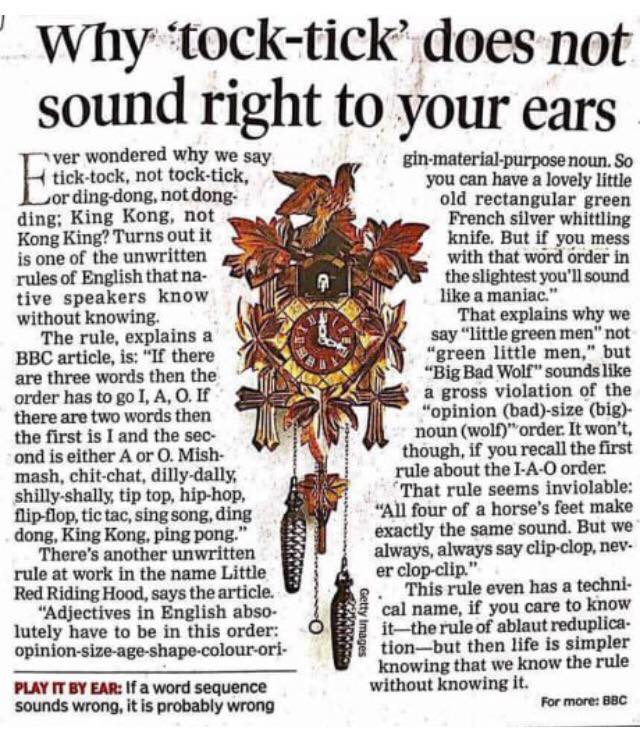Rules of English That We Didn’t Know We Knew
 In a BBC article that’s gone viral on the Internet, author Mark Forsyth describes a number of ways that fluent speakers of English instinctively apply rules of word order just because they “sound right.” For example, why do tick-tock, flip-flop, and knick-knack sound fluent to the ear, while tock-tick, flop-flip and knack-knick just do not? (The rule of vowel order – I, A, O – is an actual protocol with a very official sounding name: the rule of ablaut reduplication.)
In a BBC article that’s gone viral on the Internet, author Mark Forsyth describes a number of ways that fluent speakers of English instinctively apply rules of word order just because they “sound right.” For example, why do tick-tock, flip-flop, and knick-knack sound fluent to the ear, while tock-tick, flop-flip and knack-knick just do not? (The rule of vowel order – I, A, O – is an actual protocol with a very official sounding name: the rule of ablaut reduplication.)
The same goes for the order of a string of adjectives. Why does little red Italian sports car ring true to the ear, while red sports Italian little car does not? Forsyth says there is a very deliberate (and rarely wavering) order for adjectives: opinion-size-age-shape-colour-origin-material-purpose. We call it the “Royal Order of Adjectives.” That’s why you can have a beautiful antique French silver vase, but not a marble Greek modern unusual statue. (Well, you can have one, but other people won’t understand what you’re talking about.)
You can read more about teaching the “Royal Order of Adjectives” at www.hip-books.com.




